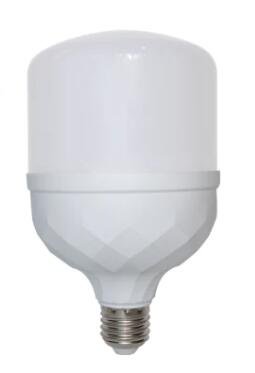Illuminating Brilliance: The Crucial Role of Phosphors in LED Bulb Technology
2024-01-20
Introduction:
Light Emitting Diodes (LEDs) have revolutionized the lighting industry, offering energy-efficient and long-lasting illumination. At the heart of LED bulb technology lies a fascinating component – phosphors. In this blog, we delve into the indispensable role of phosphors in LED bulb technology, exploring how these compounds contribute to the efficiency, color rendering, and versatility of LED lighting.
1. What are Phosphors?
Phosphors are substances that exhibit phosphorescence, a phenomenon where they absorb light energy and then emit it gradually in the form of visible light. In the context of LED bulbs, phosphors play a transformative role in converting the blue light emitted by LEDs into a broad spectrum of colors suitable for various applications.
2. Blue LED Excitation:
The core of LED bulb technology involves the use of blue LEDs. These LEDs emit a high-energy blue light when an electric current passes through them. However, the resulting light is not always ideal for general illumination due to its color temperature. This is where phosphors step in to enhance the quality and versatility of LED light.
3. Color Conversion:
Phosphors are strategically coated onto or combined with the LED chip. When the blue light from the LED chip strikes the phosphor coating, it undergoes a process called downconversion. This process transforms the high-energy blue light into lower-energy, longer-wavelength light across the visible spectrum.
4. Tuning Color Temperature:
The addition of phosphors allows manufacturers to tune the color temperature of LED light. By carefully selecting and combining different phosphor materials, LED bulbs can achieve a range of color temperatures, from warm white (lower Kelvin values) to cool white (higher Kelvin values). This flexibility caters to diverse lighting preferences and applications.
5. Enhanced Color Rendering:
Phosphors contribute significantly to color rendering in LED lighting. Color rendering refers to the ability of a light source to accurately represent the colors of objects compared to natural sunlight. Phosphors enable LEDs to produce light with high color rendering index (CRI), ensuring that illuminated objects appear vibrant and true to color.
6. Warm White and Cool White Options:
Phosphors enable the creation of warm white and cool white LED lighting options. Warm white light, with a lower color temperature, mimics the cozy and inviting glow of traditional incandescent bulbs. Cool white light, with a higher color temperature, is often preferred for task lighting and areas where a brighter, daylight-like illumination is desired.
7. Energy Efficiency:
The use of phosphors in LED technology contributes to the energy efficiency of these bulbs. By converting a significant portion of the blue light into visible light across the spectrum, phosphors maximize the light output while minimizing energy waste.
8. Longevity and Stability:
Phosphors play a role in enhancing the stability and longevity of LED bulbs. High-quality phosphor coatings ensure that the color output remains consistent over the life of the bulb. This is crucial for maintaining the intended lighting ambiance and preventing color shifts.
9. Specialty Lighting Applications:
Phosphors enable the creation of specialty lighting applications, including RGB (Red, Green, Blue) LEDs and smart lighting systems. The controlled blending of phosphors with different emission spectra allows for the generation of a wide range of colors, making these LEDs suitable for decorative and dynamic lighting.
10. Continued Innovation:
Ongoing research and innovation in phosphor technology contribute to further advancements in LED lighting. Researchers explore new phosphor materials and formulations to improve efficiency, color accuracy, and reduce the environmental impact of LED manufacturing.
Conclusion:
Phosphors stand as unsung heroes in the world of LED bulb technology, transforming the blue light emitted by LEDs into versatile, energy-efficient, and visually appealing illumination. As LED technology continues to evolve, the role of phosphors remains pivotal, contributing to the ongoing quest for more efficient, sustainable, and aesthetically pleasing lighting solutions.



